SLUS999A November 2009 – November 2015
PRODUCTION DATA.
- 1 Features
- 2 Applications
- 3 Description
- 4 Revision History
- 5 Description (Continued)
- 6 Pin Configuration and Functions
- 7 Specifications
-
8 Detailed Description
- 8.1 Overview
- 8.2 Functional Block Diagram
- 8.3
Feature Description
- 8.3.1 Adapter Detect and Power Up
- 8.3.2 Enable and Disable Charging
- 8.3.3 Automatic Internal Soft-Start Charger Current
- 8.3.4 Switching Frequency
- 8.3.5 Converter Operation
- 8.3.6 Refresh BTST Capacitor
- 8.3.7 UCP (Charge Undercurrent): Using Sense Resistor
- 8.3.8 Cycle-By-Cycle Charge Overcurrent Protection, Using High-Side Sense-FET
- 8.3.9 Average Charge Overcurrent Protection, Using Sense Resistor
- 8.3.10 Battery Overvoltage Protection, Using Remote Sensing VFB
- 8.3.11 Battery Short Protection
- 8.3.12 Battery Trickle Charging
- 8.3.13 High Accuracy VICM Using Current Sense Amplifier (CSA)
- 8.3.14 VDDSMB Input Supply
- 8.3.15 Input Undervoltage Lockout (UVLO)
- 8.3.16 VDDP Gate Drive Regulator
- 8.3.17 Input Current Comparator Trip Detection
- 8.3.18 Open-Drain Status Outputs (ACOK, ICOUT Pins)
- 8.3.19 Thermal Shutdown Protection
- 8.3.20 Charger Timeout
- 8.3.21 Charge Termination For Li-Ion or Li-Polymer
- 8.3.22 Remote Sense
- 8.4 Device Functional Modes
- 8.5 Programming
- 8.6 Register Maps
- 9 Application and Implementation
- 10Power Supply Recommendations
- 11Layout
- 12Device and Documentation Support
- 13Mechanical, Packaging, and Orderable Information
Package Options
Mechanical Data (Package|Pins)
- RUV|34
Thermal pad, mechanical data (Package|Pins)
- RUV|34
Orderable Information
7 Specifications
7.1 Absolute Maximum Ratings
over operating free-air temperature range (unless otherwise noted)(1)(2)| MIN | MAX | UNIT | ||
|---|---|---|---|---|
| Voltage | DCINP, DCINA, CSOP, CSON, CSSP, CSSN, VFB, ACOK | –0.3 | 30 | V |
| PHASE | –1 | 30 | ||
| EAI, EAO, FBO, VDDP, ACIN, VICM, ICOUT, ICREF, CE | –0.3 | 7 | ||
| VDDSMB, SDA, SCL | –0.3 | 6 | ||
| VREF | –0.3 | 3.6 | ||
| BOOT (with respect to AGND and PGND) | –0.3 | 36 | ||
| Maximum difference voltage: CSOP–CSON, CSSP–CSSN | –0.5 | 0.5 | V | |
| Operating junction temperature, TJ | -40 | 155 | °C | |
| Storage temperature, Tstg | –55 | 155 | °C | |
(1) Stresses beyond those listed under Absolute Maximum Ratings may cause permanent damage to the device. These are stress ratings only, which do not imply functional operation of the device at these or any other conditions beyond those indicated under Recommended Operating Conditions. Exposure to absolute-maximum-rated conditions for extended periods may affect device reliability.
(2) All voltages are with respect to AGND and PGND if not specified. Currents are positive into, and negative out of the specified terminal. Consult Packaging Section of the data book for thermal limitations and considerations of packages.
7.2 ESD Ratings
| VALUE | UNIT | |||
|---|---|---|---|---|
| V(ESD) | Electrostatic discharge | Human-body model (HBM), per ANSI/ESDA/JEDEC JS-001(1) | ±2000 | V |
| Charged-device model (CDM), per JEDEC specification JESD22-C101(2) | ±500 | |||
(1) JEDEC document JEP155 states that 500-V HBM allows safe manufacturing with a standard ESD control process.
(2) JEDEC document JEP157 states that 250-V CDM allows safe manufacturing with a standard ESD control process.
7.3 Recommended Operating Conditions
| MIN | NOM | MAX | UNIT | ||
|---|---|---|---|---|---|
| Voltage | PHASE | –1 | 24 | V | |
| DCINP, DCINA, CSOP, CSON, CSSP, CSSN, VFB, ACOK | 0 | 24 | |||
| VDDP | 0 | 6.5 | |||
| VREF | 3.3 | ||||
| VDDSMB, SDA, SCL | 0 | 5.5 | |||
| EAI, EAO, FBO, ACIN, VICM, ICOUT, ICREF, CE | 0 | 5.5 | |||
| BOOT (with respect to GND and PGND) | 0 | 30 | |||
| Maximum difference voltage: CSOP–CSON, CSSP–CSSN | –0.3 | 0.3 | V | ||
| Junction temperature | –40 | 125 | °C | ||
| Storage temperature | –55 | 150 | °C | ||
7.4 Thermal Information
| THERMAL METRIC(1) | bq24765 | UNIT | |
|---|---|---|---|
| RUV (VQFN) | |||
| 34 PINS | |||
| RθJA | Junction-to-ambient thermal resistance | 33.7 | °C/W |
| RθJC(top) | Junction-to-case (top) thermal resistance | 23 | °C/W |
| RθJB | Junction-to-board thermal resistance | 6.3 | °C/W |
| ψJT | Junction-to-top characterization parameter | 0.3 | °C/W |
| ψJB | Junction-to-board characterization parameter | 6.1 | °C/W |
| RθJC(bot) | Junction-to-case (bottom) thermal resistance | 1.9 | °C/W |
(1) For more information about traditional and new thermal metrics, see the Semiconductor and IC Package Thermal Metrics application report, SPRA953.
7.5 Electrical Characteristics
7.0 V ≤ V(DCINA) ≤ 24 V, 0°C < TJ < +125°C, typical values are at TA = 25°C, with respect to AGND (unless otherwise noted)| PARAMETER | TEST CONDITIONS | MIN | TYP | MAX | UNIT | |
|---|---|---|---|---|---|---|
| OPERATING CONDITIONS | ||||||
| VDCIN_OP | DCINA/DCINP input voltage operating range | 7 | 24 | V | ||
| CHARGE VOLTAGE REGULATION | ||||||
| VVFB_OP | VFB input voltage range | 0 | DCINA | V | ||
| VVFB_REG_ACC | VFB charge voltage regulation accuracy | ChargeVoltage() = 0x41A0 | 16.716 | 16.8 | 16.884 | V |
| –0.5% | 0.5% | |||||
| ChargeVoltage() = 0x3130 | 12.529 | 12.592 | 12.655 | V | ||
| –0.5% | 0.5% | |||||
| ChargeVoltage() = 0x20D0 | 8.350 | 8.4 | 8.450 | V | ||
| –0.6% | 0.6% | |||||
| VVFB_REG_RNG | Charge voltage regulation range | 1.024 | 19.2 | V | ||
| CHARGE CURRENT REGULATION | ||||||
| VIREG_CHG_RNG | Charge current regulation differential voltage range | VIREG_CHG = VCSOP – VCSON, Maximum charge current is 8.064 A with 10-mΩ sense resistor. | 0 | 8064 | mV | |
| ICHRG_REG_ACC | Charge current regulation accuracy | ChargeCurrent() = 0x0F80 | 3968 | mA | ||
| –3% | 3% | |||||
| ChargeCurrent() = 0x0800 | 2048 | mA | ||||
| –5% | 5% | |||||
| ChargeCurrent() = 0x0200 | 512 | mA | ||||
| –25% | 25% | |||||
| ChargeCurrent() = 0x0080 | 128 | mA | ||||
| –33% | 33% | |||||
| INPUT CURRENT REGULATION | ||||||
| VIREG_DPM_RNG | Adapter current regulation differential voltage range | VIREG_DPM = VCSSP – VCSSN | 0 | 110.08 | mV | |
| IINPUT_REG_ACC | Input current regulation accuracy | InputCurrent() ≥ 0x0800 | 4096 | mA | ||
| –3% | 3% | |||||
| InputCurrent() = 0x0400 | 2048 | mA | ||||
| –5% | 5% | |||||
| InputCurrent() = 0x0100 | 512 | mA | ||||
| –25% | 25% | |||||
| InputCurrent() = 0x0080 | 256 | mA | ||||
| –33% | 33% | |||||
| THERMAL REGULATION | ||||||
| TJ_REG_ACC | Junction temperature regulation accuracy | CE=High; Charging | 110 | 120 | 130 | °C |
| VREF REGULATOR | ||||||
| VVREF_REG | VREF regulator voltage | VDCIN > VDCIN_UVLO; VACIN > 0.6 V | 3.267 | 3.3 | 3.333 | V |
| IVREF_LIM | VREF current limit | VVREF = 0 V, VDCIN_UVLO; VACIN > 0.6 V | 35 | 75 | mA | |
| VDDP REGULATOR | ||||||
| VVDDP_REG | VDDP regulator voltage | VDCIN > VDCIN_UVLO; VACIN > 2.4 V, CE=High | 5.7 | 6.0 | 6.3 | V |
| IVDDP_LIM | VDDP current limit | VVDDP = 0 V, VDCIN > VDCIN_UVLO; VACIN > 2.4 V, CE=High |
90 | 135 | mA | |
| VVDDP = 5 V, VDCIN > VDCIN_UVLO; VACIN > 2.4 V, CE=High |
80 | |||||
| ADAPTER CURRENT SENSE AMPLIFIER | ||||||
| VCSSP/N_OP | Input common mode | Voltage on CSSP/CSSN | 0 | 24 | V | |
| VVICM | VICM output voltage | 0 | 2 | V | ||
| IVICM | VICM Output Current | 0 | 1 | mA | ||
| AVICM | Current sense amplifier voltage gain | AVICM = VVICM/ VIREG_DPM | 20 | V/V | ||
| Adapter current sense accuracy | VIREG_DPM = V(CSSP–CSSN) ≥ 40 mV | –2% | 2% | |||
| VIREG_DPM = V(CSSP–CSSN) = 20 mV | –3% | 3% | ||||
| VIREG_DPM = V(CSSP–CSSN) = 5 mV | –25% | 25% | ||||
| VIREG_DPM = V(CSSP–CSSN) = 1.5 mV | –33% | 33% | ||||
| IVICM_LIM | Output current limit | VVICM = 0 V | 1 | mA | ||
| CVICM_MAX | Maximum output load capacitance | For stability with 0-mA to 1-mA load | 100 | pF | ||
| ACIN COMPARATOR (Adapter Detect) | ||||||
| VDCIN_VFB_OP | Differential voltage from DCINA to VFB | –20 | 24 | V | ||
| VACIN_CHG | ACIN rising threshold | Min voltage to enable charging, VACIN rising | 2.376 | 2.40 | 2.424 | V |
| VACIN_CHG_HYS | ACIN falling hysteresis | VACIN falling | 40 | mV | ||
| ACIN rising deglitch (1) | VACIN rising | 100 | μs | |||
| VACIN_BIAS | Adapter present rising threshold | Min voltage to enable all bias, VACIN rising | 0.56 | 0.62 | 0.68 | V |
| VACIN_BIAS_HYS | Adapter present falling hysteresis | VACIN falling | 20 | mV | ||
| V(DCIN–VFB) COMPARATOR (Reverse Discharging Protection) | ||||||
| VDCIN-VFB_FALL | DCIN to VFB falling threshold | VDCIN – VVFB falling | 140 | 185 | 240 | mV |
| VDCIN-VFB__HYS | DCIN to VFB hysteresis | 50 | mV | |||
| DCIN to VFB rising deglitch | VDCIN – VVFB > VDCIN-VFB_RISE | 1 | ms | |||
| VFB OVERVOLTAGE COMPARATOR | ||||||
| VOV_RISE | Over-voltage rising threshold | As percentage of VVFB_REG | 104% | |||
| VOV_FALL | Over-voltage falling threshold | As percentage of VVFB_REG | 102% | |||
| VFB BATSHORT COMPARATOR (Undervoltage) | ||||||
| VVFB_SHORT_RISE | VFB short rising threshold | 2.6 | 2.7 | 2.85 | V | |
| VVFB_SHORT_HYS | VFB short falling hysteresis | 250 | mV | |||
| VVFB_SHORT_ICHG | VFB short precharge current | 60 | 220 | mA | ||
| VFB BATLOWV COMPARATOR | ||||||
| VVFB_LOWV_RISE | VFB LOWV rising threshold | 3.9 | 4 | 4.1 | V | |
| VVFB_LOWV_HYS | VFB LOWV falling hysteresis | 400 | mV | |||
| VFB LOWV one-shot reset time | Time to time charger | 2 | ms | |||
| VVFB_LOWV_ICHG | VFB LOWV max DAC output | VFB falling, on 10-mΩ resistor | 3 | A | ||
| CHARGE OVER-CURRENT COMPARATOR – Average current using sense resistor | ||||||
| Charge overcurrent falling threshold | V(CSOP-CSON) > 33 mV, as percentage of IREG_CHG | 145% | ||||
| Minimum current limit | V(CSOP-CSON) < 33 mV | 50 | mV | |||
| Internal filter pole frequency | 160 | kHz | ||||
| CHARGE OVER-CURRENT COMPARATOR – Cycle-by-Cycle Maximum current using High-Side SenseFet | ||||||
| VOCP_CycleByCycle | Charge over-current rising threshold, latches off high-side MOSFET until next cycle. | High-side drain current rising-edge. | 8 | 10 | 12 | A |
| DCIN INPUT UNDERVOLTAGE LOCK-OUT COMPARATOR (UVLO) | ||||||
| VDCIN_UVLO | DCINA undervoltage rising threshold | Measure on DCINA pin | 3.5 | 4 | 4.5 | V |
| VDCIN_UVLO_HYS | DCINA undervoltage hysteresis, falling | 260 | mV | |||
| INPUT CURRENT COMPARATOR | ||||||
| VICCOMP_OFFSET | AC low power mode comparator offset voltage | On ICREF | –8 | 8 | mV | |
| THERMAL SHUTDOWN COMPARATOR | ||||||
| TSHUT | Thermal shutdown threshold with rising temperature | Temperature rising | 155 | °C | ||
| TSHUT_HYS | Thermal shutdown hysteresis, falling | Temperature falling | 20 | |||
| PWM HIGH SIDE POWER MOSFET | ||||||
| RDSON_HI | High side power MOSFET drain to source on resistance | VBOOT – VPHASE = 5.5 V, Drain current = 4 A, TJ = 25°C | 27 | 32 | mΩ | |
| VBOOT – VPHASE = 5.5 V, Drain current = 4 A, TJ = 0 to 125°C | 27 | 46 | ||||
| VBOOT_REFRESH | Bootstrap refresh comparator threshold voltage | VBOOT – VPHASE when low side refresh pulse is requested | 4 | V | ||
| IBOOT_LEAK | BOOT leakage current | High Side is on; Charge enabled | 200 | μA | ||
| PWM LOW SIDE POWER MOSFET | ||||||
| RDS_LO_ON | Low side power MOSFET drain to source on resistance | VVDDP = 6 V, Drain Current = 4 A, TJ = 25°C | 38 | 45 | mΩ | |
| VVDDP = 6 V, Drain Current = 4 A, TJ = 0 to 125°C | 38 | 66 | ||||
| PWM DRIVERS TIMING | ||||||
| Minimum driver dead time | Dead time when switching between High-Side MOSFET and Low-Side MOSFET. Adaptive protective dead-time could be more. | 25 | ns | |||
| PWM OSCILLATOR | ||||||
| FSW | PWM switching frequency | 540 | 700 | 840 | kHz | |
| VRAMP_OFFSET | PWM ramp offset | 200 | mV | |||
| VRAMP_HEIGHT | PWM ramp height | As percentage of DCINA | 6.67 | %DCINA | ||
| QUIESCENT CURRENT | ||||||
| IOFF_STATE | Total off-state battery current from CSOP, CSON, VFB, DCINA, DCINP, BOOT, PHASE, etc., Adapter removed | VVFB = 16.8 V, VACIN < 0.6 V, VDCINA > 5 V, ≤ TJ = 0°C to 85°C |
7 | 10 | μA | |
| IBAT_ON | Battery on-state quiescent current | VVFB = 16.8 V, 0.6 V < VACIN < 2.4 V, VDCINA > 5 V |
1 | mA | ||
| IBAT_LOAD_CD | Internal battery load current,during charge disabled, adapter connected | Charge is disabled: VVFB = 16.8 V, VACIN > 2.4 V, VDCINA > 5 V |
0.5 | 1 | mA | |
| IBAT_LOAD_CE | Internal battery load current during charge enabled, charging. CSOP, CSON, VFB, BOOT, PHASE | CE = high, VVFB = 16.8 V, VACIN > 2.4 V, VDCINA > 5 V |
6 | 10 | 12 | mA |
| IAC | Adapter quiescent current, charge disabled | CE = low, VDCINA = 20 V | 0.5 | 1 | mA | |
| IAC_SWITCH | Adapter switching quiescent current | Charge enabled, VDCINA = 20 V, converter switching | 25 | mA | ||
| INTERNAL SOFT START (8 Steps to Regulation Current ICHG) | ||||||
| Soft start steps | 8 | step | ||||
| Soft start step time | 1.6 | ms | ||||
| CHARGER SECTION POWER-UP SEQUENCING | ||||||
| Charge-Enable Delay after Power-up | Delay from when adapter is detected and CE is high to when the charger is allowed to turn on | 2 | ms | |||
| CHARGE UNDERCURRENT COMPARATOR (Cycle-by-Cycle Synchronous to Non-Synchronous) | ||||||
| VUCP | Cycle-by-cycle Synchronous to Non-Synchronous Transition Threshold | Cycle-by-cycle, (CSOP-CSON) voltage, falling, LGATE turns-off and latches off until next cycle | 5 | 10 | 15 | mV |
| LOGIC INPUT PIN CHARACTERISTICS (CE, SDA, SCL) | ||||||
| VIN_LO | Input low threshold voltage | 0.8 | V | |||
| VIN_HI | Input high threshold voltage | Pull-up CE with ≥ 2 kΩ resistor, or connect directly to VREF. | 2.1 | V | ||
| VBIAS | Input bias current | V = 0 to 7 V | 1 | μA | ||
| OPEN-DRAIN LOGIC OUTPUT PIN CHARACTERISTICS (ACOK, ICOUT) | ||||||
| VOUT_LO | Output low saturation voltage | Sink Current = 5 mA | 0.5 | V | ||
| VDDSMB INPUT SUPPLY FOR SMBUS | ||||||
| VVDDSMB_RANGE | VDDSMB input voltage range | 2.7 | 5.5 | V | ||
| VVDDSMB_UVLO_ Threshold_Rising | VDDSMB undervoltage lockout threshold voltage, rising | VVDDSMB Rising | 2.4 | 2.5 | 2.6 | V |
| VVDDSMB_UVLO_ Hyst_Rising | VDDSMB undervoltage lockout hysteresis voltage, falling | VVDDSMB Falling | 100 | 150 | 200 | mV |
| IVDDSMB_Iq | VDDSMB quiescent current | VVDDSMB = SCL = SDA = 3.3 V | 20 | 30 | μA | |
(1) Verified by design.
7.6 SMB Timing Requirements
| PARAMETER | TEST CONDITIONS | MIN | TYP | MAX | UNIT | |
|---|---|---|---|---|---|---|
| tR | SCLK/SDATA rise time | 1 | µs | |||
| tF | SCLK/SDATA fall time | 300 | ns | |||
| tW(H) | SCLK pulse width high | 4 | 50 | µs | ||
| tW(L) | SCLK Pulse Width Low | 4.7 | µs | |||
| tSU(STA) | Setup time for START condition | 4.7 | µs | |||
| tH(STA) | START condition hold time after which first clock pulse is generated | 4 | µs | |||
| tSU(DAT) | Data setup time | 250 | ns | |||
| tH(DAT) | Data hold time | 300 | ns | |||
| tSU(STOP) | Setup time for STOP condition | 4 | µs | |||
| t(BUF) | Bus free time between START and STOP condition | 4.7 | µs | |||
| FS(CL) | Clock Frequency | 10 | 100 | kHz | ||
| HOST COMMUNICATION FAILURE | ||||||
| ttimeout | SMBus bus release timeout | 22 | 25 | 35 | ms | |
| tBOOT | Deglitch for watchdog reset signal | 10 | ms | |||
| tWDI | Watchdog timeout period | 140 | 170 | 200 | s | |
| OUTPUT BUFFER CHARACTERISTICS | ||||||
| V(SDAL) | Output LO voltage at SDA, I(SDA) = 3 mA | 0.4 | V | |||
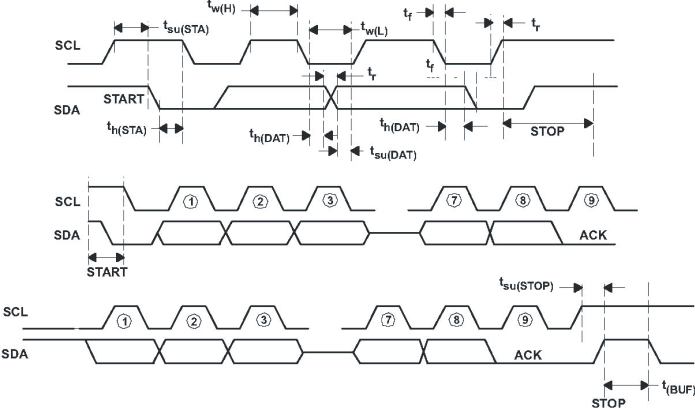 Figure 1. SMBus Communication Timing Waveforms
Figure 1. SMBus Communication Timing Waveforms
7.7 Typical Characteristics
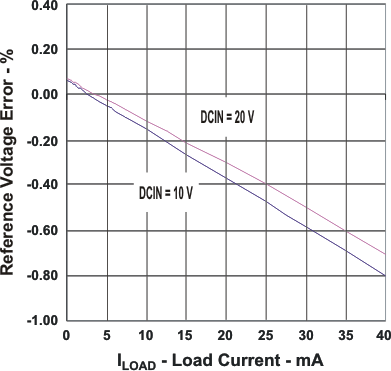 Figure 2. VREF Load and Line Regulation vs Load Current
Figure 2. VREF Load and Line Regulation vs Load Current
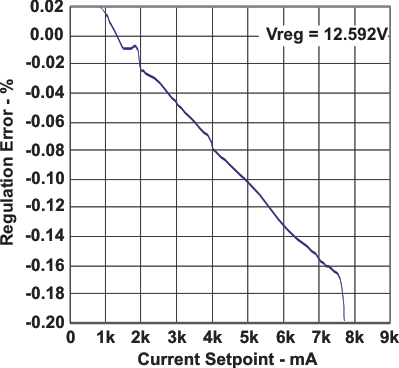 Figure 4. VFB Voltage Regulation Accuracy vs Charge Current
Figure 4. VFB Voltage Regulation Accuracy vs Charge Current
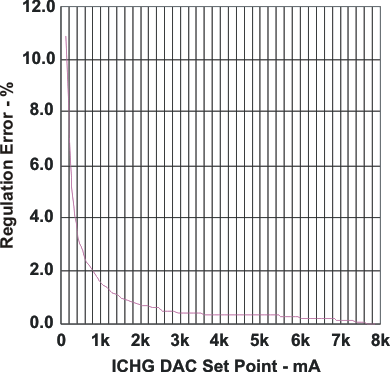 Figure 6. Charge Current Regulation Accuracy vs V(CSOP-CSON) Voltage Set Point
Figure 6. Charge Current Regulation Accuracy vs V(CSOP-CSON) Voltage Set Point
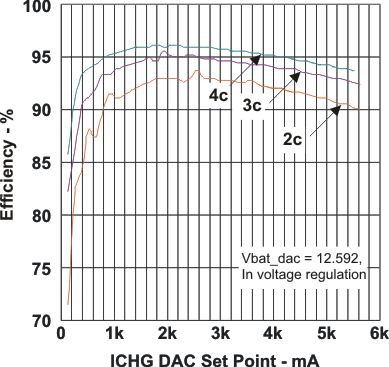 Figure 8. Efficiency vs Battery Charge Current
Figure 8. Efficiency vs Battery Charge Current
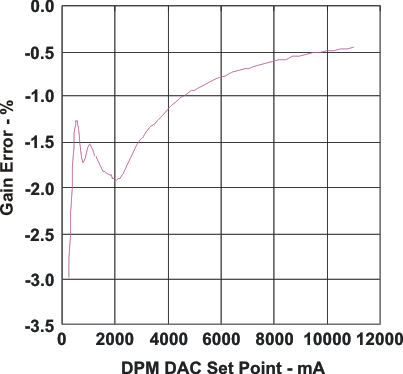 Figure 10. VICM Input Current Sense Amplifier Accuracy vs V(CSSP-CSSN) Voltage
Figure 10. VICM Input Current Sense Amplifier Accuracy vs V(CSSP-CSSN) Voltage
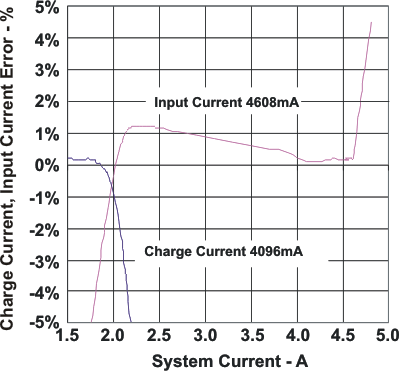 Figure 12. Input Regulation Current (DPM), and Charge Current Accuracy vs System Current
Figure 12. Input Regulation Current (DPM), and Charge Current Accuracy vs System Current
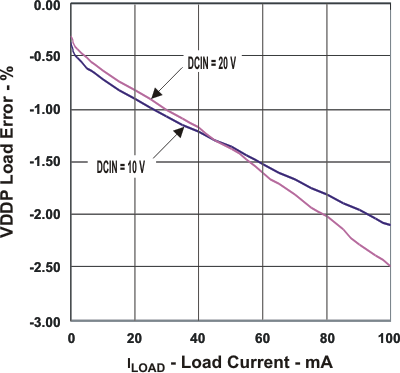 Figure 3. VDDP Load and Line Regulation vs Load Current
Figure 3. VDDP Load and Line Regulation vs Load Current
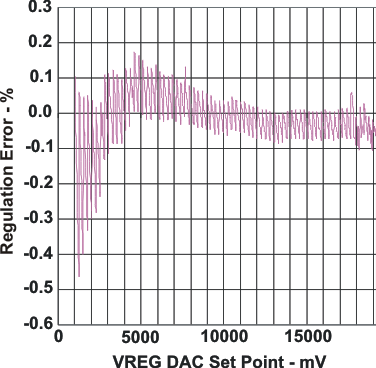 Figure 5. VFB Voltage Regulation Accuracy vs Set Point
Figure 5. VFB Voltage Regulation Accuracy vs Set Point
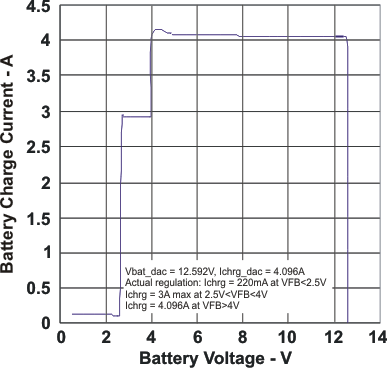 Figure 7. Charge Current Regulation vs VFB Voltage
Figure 7. Charge Current Regulation vs VFB Voltage
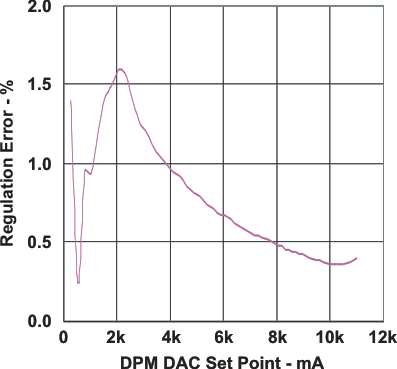 Figure 9. Input Current Regulation (DPM) Accuracy vs V(CSSP-CSSN) Voltage Set Point
Figure 9. Input Current Regulation (DPM) Accuracy vs V(CSSP-CSSN) Voltage Set Point
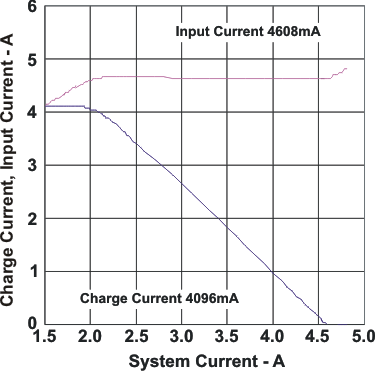 Figure 11. Input Regulation Current (DPM) and Charge Current vs System Current
Figure 11. Input Regulation Current (DPM) and Charge Current vs System Current